Coffee machine-brief introduction of coffee machine
Coffee is one of the most popular drinks in the world, it brings pleasure and excitement to people. With the reform and opening up of our country, the most popular Italian espresso, Cappuccino and Latte milk coffee in the world are also placed on the dining table of the Chinese people, and are loved by more and more people. Brewing a perfect Italian espresso
Or cappuccino coffee, all with the help of a special coffee machine to complete. The coffee machine uses about 10 atmospheric pressures to force hot water of about 90 ° C through about 10 grams of fine coffee powder, extract coffee fat and other aromatic substances in the coffee powder, and flow into the cup after fully dissolving with hot water. The whole process is a comprehensive process of physical and chemical changes, and it should be completed in 18-28 seconds, so as to effectively avoid the bad taste caused by excessive extraction. Milk is emulsified with high-pressure steam from coffee machines to create an aromatic foam, which is added to an espresso coffee with a thick layer of foam for a delicious cappuccino. Obviously, the coffee machine plays a decisive role in the production of a high-quality Italian espresso or cappuccino.
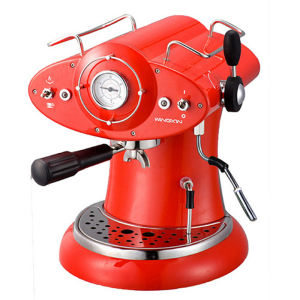
Coffee Maker
Coffee machine-automatic coffee machine
A fully automatic coffee machine is a machine that makes a cup of coffee at the press of a button-automating everything from grinding coffee beans to brewing coffee with hot water. The fully automatic coffee machine is the fastest growing in the whole coffee machine industry. Since 1999, GAGGIA released the first fully automatic coffee machine capable of making Espresso (espresso). Different coffee machine manufacturers are committed to research and development, so that its function has been continuously improved. There have been high-end machines that can heat milk and match it in proportion in coffee to achieve one-button latte, one-button cappuccino and other functions. The coffee produced by a good full-automatic coffee machine is completely comparable to the commercial professional machine, and because it can grind beans automatically and the price is much lower than the professional machine, it has been favored by families and offices since its inception.
With the deepening of coffee culture in China, automatic coffee machine is setting off a new buying craze.
Coffee machines-Classification of coffee machines
Semi-automatic coffee machine
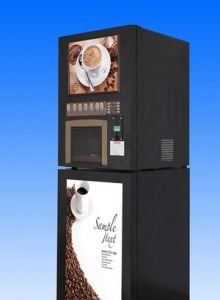
Coffee Maker
Semi-automatic coffee machine, commonly known as handle machine, is a traditional Italian coffee machine. This kind of machine requires manual operation of grinding, pressing, loading, brewing and manual removal of residue. These machines include small household machines with single faucets, large commercial machines with double faucets and three faucets, etc., and the newer machines are also equipped with electronic water control, which can accurately and automatically control the amount of coffee brewing. This kind of machine is mainly produced in Italy and is very popular in Italy. Its main features are: the machine is simple in structure, easy to work, easy to maintain, and high quality Italian coffee can be made according to the correct method of use. The disadvantage of this kind of machine is that operators have to be strictly trained to make high-quality coffee with this machine, and it is not easy to maintain the consistency of coffee quality. In addition, the efficiency of this kind of machine is relatively low. Famous brands are: La Pavoni, la Cimbali, Nuova Simonelli, Boslio and so on.
Fully automatic coffee machine
People apply the electronic technology to the coffee machine to realize the automatic control of the whole process of brewing coffee, such as grinding, pressing, loading, brewing, removing residue and so on, creating a fully automatic coffee machine. High-quality automatic coffee machines brew coffee according to the most scientific data and procedures, and they are all equipped with a complete protection system, which is both convenient and easy to use. You can get high-quality coffee with just a click, and its taste is better than that of traditional coffee makers. The disadvantage of this kind of machine is that the structure is complicated, good maintenance is needed and the maintenance cost is high. But,
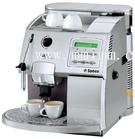
Coffee Maker
The automatic coffee machine is more and more loved by customers because of its advantages such as convenience, rapidness, consistent quality, high efficiency and no training for operators. Switzerland, Germany, Italy and other countries produce a wide variety of fully automatic coffee machines. Among them, the fully automatic coffee machine made in Switzerland has ingenious design, stable quality and unique characteristics, and enjoys a high reputation in the international coffee machine industry. Well-known automatic coffee machine manufacturers have Solis, Saeco, Schaerer, LaCimbali, Catina, Nuova Simonelli, OR.EN, and so on. According to the number of cups per hour (usually from 60 to 280 cups per hour), the automatic coffee machine is divided into large, medium and small, with a wide variety, suitable for business, retail, catering, as well as office and home.
Coffee maker-how to choose a coffee machine
Coffee machine as part of the investment to get a good return, the choice of coffee machine is very important.
First of all, the type of coffee machine should be determined. General professional coffee shop, coffee bar, Italian traditional manual coffee machine is the first choice. Because in these places, trained professionals use traditional Italian coffee machines to instantly grind and brew coffee, which not only creates a strong coffee atmosphere, but also permeates the aroma of coffee in the air, so that guests can experience the unique charm of coffee. And hotel cafes, restaurants, bars, offices are more automatic coffee machine. Because of the large passenger flow and concentrated demand in these places, the selection of fully automatic coffee machine will fully show its advantages of convenience, speed and high quality, so that guests can enjoy constant quality coffee in time in the shortest possible time, and get physical and mental satisfaction. In addition, the specification of the coffee machine should be selected according to the demand for coffee per hour. Generally speaking, there should be a certain margin for the ability of the coffee machine. The choice of which brand of coffee machine is also very important, the famous international brand product quality is good, the spare parts supply is guaranteed, the unknown brand because the output is small and the scale is small, the spare parts supply is not guaranteed, the risk is greater.
Coffee maker-how to buy a coffee maker
At present, China's coffee machine market is still in a disorderly stage, and the market competition is very fierce. some foreign manufacturers have crammed foreign outdated models with unsalable technology into the Chinese market, and some domestic unscrupulous businessmen use household machines as commercial machines. confuse semi-automatic and fully automatic machines to reap exorbitant profits and harm users. Some users spend a lot of money to buy either low-end cheap products or just a pile of industrial waste. To buy a coffee machine, do market research, collect extensive data or consult a professional coffee dealer or company to determine the type of coffee maker you need: the next step is to choose a qualified supplier. Professional coffee machine suppliers not only have rich experience, can provide you with a variety of reference, help and the most reasonable price, but also have a good after-sales service system and adequate and timely supply of spare parts.
Coffee machine-coffee machine: the principle of single boiler heat exchange
Since Luigi Bezzera launched the first commercial coffee machine with steam pressure in 1901, whether it is the Pavoni Gaggi or other machines that use steam or pistons as pressure, there has been only one boiler: the bottom of the boiler is the hot water for brewing coffee, and the top provides steam, but in order to produce steam, the whole boiler must be heated to boiling, causing hot water near the boiling point to burn the coffee powder and lose the aromatic oil hidden deep in the coffee powder. And extract the coffee that is doubly bitter. Because the water for brewing coffee is heated in a large boiler, the water will not be fresh if it is placed in the boiler for too long, and the temperature difference of hot water will increase due to the use of steam, because the difference in the amount of steam also increases the temperature difference of hot water for brewing coffee. To improve the temperature difference
Ernesto Valente in 1960, in the world's first FAEMAE61 with a pump as a source of pressure, changed the way the water used to make coffee was heated, so that the water did not come into direct contact with the heat source, but used a method similar to water-separated heating. In the middle of the FAEMAE61 boiler (hereinafter referred to as the outer boiler) is a tube (hereinafter referred to as the inner pipe line), which uses a pump to introduce fresh cold water into the internal curved pipeline. When the pump pushes fresh cold water through the tube, the cold water will become hot due to the hot water in the outer boiler, but there are tubes on the outside, so the fresh water will not come into contact with the hot water of the outer boiler, and the inner water pipe is curved in shape. the aim is to make the cold water have enough time to come into contact with the external boiler and become a hot water temperature just suitable for brewing coffee.
(see the picture below, which is a bit simple.)
┌─ vapor
│ ┌─ →
│ │
┌─┐ │ ^ │ water level
Cold water ─┴ ┴─┴──┐┌──┴──┐
→ ─┬ ┬─┬─┐││┌─┬─┐│
└─┘ │ │└┘│ │ shower head
Pump │ └──┘ │
│ │
│ │
└─┘
Boiler boiler
Due to the circulation of hot water in the boiler, the temperature of each cup of coffee is very close, whether it is one cup an hour or a hundred cups at a time. In this way, it can not only reduce the temperature difference, but also take into account the freshness of the water, while the hot water in the outer boiler is only used to produce steam to make milk foam, not to brew coffee. This is the principle of a single boiler heat exchanger. Today, more than 30 years later, the internal structure and principle of most Italian coffee machines are still very close to the FAEMA E61. From the above explanation, we can infer that the larger the capacity of the external boiler, the lower the temperature difference in the hot water for brewing coffee, and the more it can reduce the temperature difference caused by the use of steam. Attached is the section of the heat exchanger.
Coffee maker-use
As we all know, the traditional coffee brewing process requires roasting, grinding, brewing, filtration and other processes, although the traditional coffee production process, has a good ornamental and interesting, brewing coffee in leisure is also interesting. But compared with the rapid modern life, many people do not have time to learn these processes; in order to solve this problem, coffee machines came into being.
To start with, making the perfect Italian Espresso or Cappuccino coffee requires the help of a special coffee maker. The coffee machine uses about 10 atmospheres to force hot water of about 90 degrees Celsius through about 10 grams of fine, compacted coffee powder in 25-30 seconds, so as to effectively avoid the bad smell caused by excessive extraction. Use the high-pressure steam produced by the coffee machine to emulsify the milk and beat the fragrant foam.
Coffee machine-maintenance
After you buy it back, please read the manual carefully.
As the new machines have the smell of plastic material, which is harmful to the human body, the electric coffee pot should boil two pots of boiling water before it is used for the first time to remove the bad smell.
The cleaning of leaky screen and filter screen, soak in water for a period of time, and then rinse with water, back and forth, do not scrape with hard objects, so as not to cause damage and affect the use.
After use or cleaning, wipe with a dry cloth and place it in a place that is not easy for children to touch. Do not invert it or press it with heavy objects.
Coffee maker-History
Development history of coffee machine
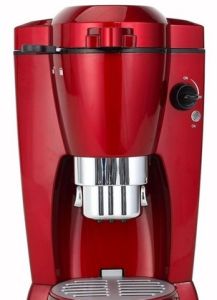
Coffee Maker
At the beginning of the 20th century, an "impatient engineer" living near Napoli, Italy, was impatient with dripping coffee for too long, so he came up with a way to make coffee in a high-temperature, high-pressure way to shorten the time, so he invented the world's unique Italian coffee for quick cooking, and Espresso became popular.
The quick Italian conditioning method invented by the impatient engineer can not only save the time of brewing coffee, but also make the coffee with a mellow flavor, so it is called Espresso by the Italians to commemorate the engineer's discovery. Espresso sounds like Italian art, but it simply means "under pressure" in Italian, which is the same as the English word for under pressure.
After that, we saw the above passage in many books and in the essence of BBS, which is regarded as the origin of Italian coffee (Espresso). The "impatient engineer of the early 20th century" described in the above paragraph means probably Luigi Bezzera. I don't know if Bezzera is impatient, but he made a coffee machine under steam pressure in 1901, not only because he was "impatient with dripping coffee for too long", but more importantly, he knew that too slow brewing time would directly affect the quality of coffee. ──, because the brewing time is too long, the coffee powder should not be ground too fine. Rough grinding means that fewer aromatic components can be extracted than fine powder. Fast is only the superficial reason, the pursuit of quality is the driving force of Espresso development!
Moreover, I can't agree that Bezzera alone 'invented' Espresso, although he was the first to try to make a commercial coffee machine under steam pressure and created the Espresso culture that is currently made in the bar and injects coffee directly into the guest cup. However, the coffee brewed by this kind of coffee machine still does not have the delicious taste of Espresso and is full of Crema. This is mainly because Bezzera's coffee machine uses the steam produced when the water boils, which forms pressure in an airtight boiler and pushes hot water into the coffee powder in the shower head. In order to make steam, the whole boiler must be heated to boiling, causing hot water near the boiling point to burn the coffee powder, lose the aromatic oil hidden in the coffee powder, and extract the doubly bitter coffee. There are two main reasons why coffee brewed on Bezzera's machine cannot form Crema:
The hot water for brewing coffee is too hot, resulting in the loss of oil.
The steam boiler cannot provide enough pressure.
Even so, exerting extra pressure to shorten the time it takes to brew coffee is still worth the effort. Just don't use steam, what should be used as a source of pressure? The further question is: how much pressure does it take to get the best extraction rate?
A brief History of Italian Coffee Machine Ⅱ

Coffee Maker
Desiderio Pavoni obtained a design patent for Bezzera in 1903, and he has been making the coffee machine since 1905. After that, Teresio Arduino began to produce similar coffee machines, and other producers followed suit. In the 1920s, coffee shops in Italy could see signs of this kind of coffee machine. But the Italians are obviously not satisfied with the results of the steam pressure coffee machine. The pressure should be increased by steam, but increasing the heat may burn the coffee powder during cooking, losing the aromatic oil hidden in the coffee powder and making it more refined.
Take out the doubly bitter coffee. Therefore, some people think: can it be directly pressurized on the hot water instead of boiling the water with steam as the pressure?
During the two world wars, people used the natural pressure of water from the faucet to increase the pressure of brewing coffee. The coffee machine uses electricity to quickly heat a small pot of water to the boiling temperature, each pot of water to make a cup of coffee, each pot connected to the faucet. As long as the operator gently press the pole on the small pot, the pressure of the faucet will push the hot water in the small pot to the coffee powder. According to the difference of water pressure in different regions, generally speaking, the pressure generated by this coffee machine is greater than the 1.5 atmospheric pressure produced by the steam pressure coffee machine. The height of this coffee machine is not too different from that of the steam pressure coffee machine, but the overall size is smaller. The appearance is more in line with the popular trend of the late 1920s and 1930s, replacing the arc of the steam pressure coffee machine with straight lines and geometric lines.
Another way to generate more pressure than 1.5 atmospheres is to use compressed air. For example, a home coffee machine in Milanes collector Ambrogio Fumagalli uses an air pump to pressurize hot water for brewing coffee (during World War II). In 1938, Francesco IIIy made the llletta' Coffee Machine, a large commercial coffee machine based on the principle of compressed air. When the crossbar on the coffee machine was lifted before World War II, water was injected into the space occupied by the piston and pressed down, and the pressure on the piston injected water evenly into the coffee powder in the filter. this means that hot water can brew coffee before it boils without scalding the coffee powder. At the same time, Achille Gaggia, the owner of a cafe in Milan, used a similar method to brew coffee. This method is gradually adopted by other coffee machine manufacturers, so this new coffee machine is also gradually replacing the steam pressure coffee machine. Today, the application of this principle can still be seen on household machines, the La Pavoni.
A brief History of Italian Coffee Machine Ⅲ
It was mentioned last week that before World War II, although it avoided the disadvantage of using steam as a source of pressure to burn the coffee powder easily, because the pressure is to push the hot water through the force of the arm transmitted by the piston, not only a strong arm is needed, but the pressure is not easy to stabilize.
World War II stopped Cremonesi and Gaggia from improving the coffee machine. When Cremonesi died during the war, he left the patent for the coffee maker to his widow, Rosetta Scorza. We don't know whether Rosetta Scorza told Gaggia about the design patent, or whether Gaggia's design came entirely from its own invention. In 1947, Gaggia improved the original piston principle, and the force of the piston was controlled by a spring. As long as the operator presses the rod, the spring will be compressed and hot water will be injected into the space between the piston and the coffee powder. When the spring on the piston expands, press the piston down, the hot water will flow to the coffee place, and the rod will return to its original position.
In 1948, Gaggia applied this principle to complete his coffee machine, because he pushed hot water into a denser coffee powder and the pressure was greater and more stable than ever before, resulting in a layer of Krima on the coffee, which appeared for the first time in history. Since then, Klima has become the symbol of Italian coffee, and like Turkish coffee in the past, Klima is also the standard to judge whether coffee is good or bad. Gaggia's coffee machine also makes the brewing process more dramatic, with the arm operating the crossbar and the crossbar slowly returning to its original position, which has become a routine at many Espresso bars.
The household La Pavoni still maintains the tradition of Signore Cremonesi and does not add a spring to the piston, but some coffee machines on the market that are very similar to La Pavoni, such as the Elektra (Family series), add springs to make the pressure stronger and more stable. The method of discrimination is very simple, as long as you gently press the crossbar to see if there is any reaction force of the spring.
A brief History of Italian Coffee Machine Ⅴ
In the evolution of the coffee machine for nearly a century, the Italians found that due to the use of additional 8-9bar pressure to force water quickly through coffee powder, pressure-rich water and coffee powder produced an average resistance, reducing the extraction time of each cup of coffee to 25 seconds and making the coffee powder as soft as flour to improve the extraction rate. At the same time, it condenses the aroma and gum in the coffee, producing a layer of ochre red Krima on the coffee. Because of this layer of Krima, Espresso is displayed with a thick colloid, which is closely integrated with the rich milk foam, creating all kinds of Italian coffee, including cappuccino.
It is because of the coffee brewing method of Espresso, which not only speeds up the brewing speed, but also improves the coffee quality. On the one hand, it makes the coffee shop owner save time and cost, and increases the daily brewing volume by several times. On the other hand, it also attracts more coffee population. Now it has swept the coffee market all over the world and become the mainstream in the market. Although the Italians never occupied any colony that produced coffee, they used the superb technology of traditional craft to improve the method of brewing coffee and created excellent brewing technology and machines like Espresso, which easily occupied the vast majority of the coffee market in the world.
Coffee maker-points for attention
1. Please do not use the coffee machine when the water is cut off.
2. Before operating the coffee machine, please pay attention to the use only when the boiler pressure pointer reaches the green area (1~1.2bar). When using, the temperature of the steam rod, the nozzle of the hot water outlet and the cooking outlet is very high, please do not expose your hands nearby to avoid the damage caused by the high temperature.
3. When pumping water by the stabilized motor, pay attention to observe whether the water pressure on the pressure gauge is in the green area (8~10bar).
4. in order to prevent the danger of overheating, please keep the power supply smooth, the ventilation inlet and outlet should not be blocked; do not cover towels or similar things except cups and plates on the warm cup rack.
5. The cup must be completely dry before it can be placed on the warm cup rack; do not place anything except the cup and plate on the warm cup rack.
6. If you do not use the coffee machine for a long time, please turn off the power and completely release the pressure in the boiler of the machine.
7. Any accessories of machinery and equipment should not be scrubbed with iron wire, steel brush and other items; they must be carefully scrubbed with a wet dishcloth.
8. Put an appropriate amount of coffee powder into the handle of the filter cup and press it carefully so as not to leave coffee powder on the edge of the filter cup, avoid air entering in the cooking process and reduce the pressure, and can prolong the life of the cooking head washer.
Matters needing attention in purchase
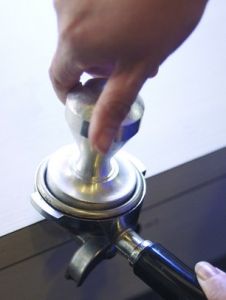
Coffee Maker
1. There is only one kind of electric coffee maker, but there are also ordinary coffee pots that are only used to make coffee powder, a two-in-one coffee maker that can grind coffee beans and Italian steam coffee pots that can make milk bubbles. If you are a 9-to-5 office worker with limited time, a cheap ordinary coffee maker is a good choice, and if you have reached the level of "fever", then the mellow smell of your own ground coffee powder and charcoal-roasted coffee with a beautiful head of milk foam and delicious cinnamon powder will certainly be your best choice.
2. In terms of specifications, the power of the household electric coffee maker is less than 1000W, the capacity is 0.5-0.8L, and you can brew 4-8 cups of coffee. If you often entertain a large number of friends or family, you can also choose a larger capacity, but it is best not to exceed 1.5L.
3. From the aspect of quality, the appearance of the electric coffee pot should be a handicraft with coordinated color and fine production, the damage and roughness of each part are not allowed, and the non-leakage at the bottom of the pot is the minimum requirement. The most important thing is to use the electric coffee maker, leakage is very dangerous, so the good insulation of the electrical components is the most basic requirement, and the plug and socket should be plugged reliably. The operation of each work control knob switch should be flexible.
4. in addition, it should be noted that, like most kitchen household appliances, the electric coffee pot cannot be boiled empty. it must be filled with water and coffee before turning on the power supply. Never turn on the electricity in the empty pot so as not to burn out the electric coffee pot. When brewing coffee, you should always pay attention to the water level in the pot. If the water is about to dry up, you should cut off the power supply in time, otherwise the pot will be burned out.
Notes on buying a new coffee maker
After buying the coffee machine, please read the instructions carefully to see if the voltage matches, as well as some other precautions and operating instructions, so as to avoid improper operation to cause damage to the body.
1. After installation, check whether the power cord is connected, whether there are signs of cracking or damage, so as to avoid electric shock, disinfect the kettle body with boiling water, remove dust, and use it cleanly.
two。 The electric coffee pot should not be dry-fired, but do not add too much water, otherwise the water will overflow and wet the electric heating element after boiling. At the same time, do not splash water on the electrical parts of the kettle body when adding water, so as not to reduce the insulation performance.
3. Coffee pot regular descaling, according to the use of scale removal 2-5 times a year. The specific method is to add 2 cups of water to the water tank, and then add 50ml vinegar to drip a cup according to the coffee-making procedure, rest for 20 minutes, then start to clean all the water in the water tank, shut down for 5 minutes, and then re-operate it with clean water for 1-2 times.
4. The cleaning of leaky screen and filter screen, soak in water for a period of time, and then rinse with water, back and forth, do not scrape with hard objects, so as not to cause damage and affect the use.
5. It should be pointed out that when cleaning the coffee pot, the pot body can not be directly immersed in water, but to remove the filter, filter cleaning, other parts had better be wiped with a clean soft cloth.
6. After use or cleaning, wipe it with a dry cloth and place it in a place that is not easy for children to touch. It must be inverted and cannot be pressed with heavy objects.
Coffee maker-advantages and disadvantages of various types of coffee machines
Nowadays more and more people drink freshly ground coffee. Many citizens are blind to the choice of coffee utensils, in order to enable the majority of coffee lovers to spend the least money to buy the most suitable utensils, the editor really spent a lot of work. After consulting the relevant experts, I finally completed this purchase secret.
Coffee pot
Live coffee pot
1. Automatic coffee machine: just put the coffee beans in the bean trough, fill the sink with water, and after a few seconds, a cup of strong coffee will appear in front of you.
Advantages: easy to operate, coffee after instant high pressure brewing, rich flavor.
Disadvantages: the price is high-it's really expensive!
two。 Live mocha pot: add water to the lower kettle, put coffee powder in the middle, then put the powdered funnel on the lower kettle and tighten the upper and lower pots. Plug in the power, and after a few minutes, all the brewed coffee spills over the top of the pot, and it is finished.
Advantages: the operation is also simple. After high pressure, the coffee is full-bodied and pure, and the price ranges from dozens of yuan to several hundred yuan.
Disadvantages: after drinking coffee, it is best to clean the coffee pot, otherwise the appearance of the pot will be affected for a long time.
3. Live semi-automatic coffee machine: put coffee powder on the handle, put the handle on the coffee machine, plug in the power supply, and soon a cup of coffee will be ready. The cheapest price is several hundred yuan.
Advantages: the coffee brewed by the semi-automatic coffee machine is the same as the automatic coffee machine, which is brewed under high pressure in an instant, and the taste is also very rich.
Disadvantages: use coffee powder and wash the coffee immediately after brewing.
4. An American coffee maker with electricity (that is, the commonly used drip-filter coffee maker)
Prices range from tens to hundreds of yuan. Put the coffee powder into the powder trough, add the water to the sink, plug it into the power supply, press a button, and the coffee will drip down. In fact, its principle is to filter the coffee down.
Pros: it is also easy to use.
Cons: the brewed coffee is not strong enough.
Important Notice :
前街咖啡 FrontStreet Coffee has moved to new addredd:
FrontStreet Coffee Address: 315,Donghua East Road,GuangZhou
Tel:020 38364473
- Prev

How to buy the coffee maker you need
To buy a coffee machine, you should do market research, collect extensive information or consult a professional coffee dealer or company to determine the type of coffee machine you need.
- Next
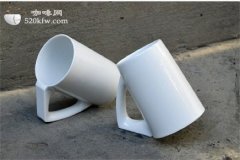
Creative coffee mug
The mug has a lingering hygiene problem: if the mouth of the cup is up, it will enter the dust; if the mouth of the cup is down, it will stain the mouth of the cup. Gao Fenglin, a teacher in the Industrial Design Department of the China Academy of Fine Arts, designed a tilted mug whose axis is not vertical, but at an oblique angle to the horizontal plane, so that when the mouth of the cup is facing down, it will neither enter the soil nor get dirty, killing two birds with one stone. The work was awarded
Related
- What is the Philharmonic pressure? How to use Philharmonic pressure to make delicious coffee
- Why does a hand grinder have more fine powder than an electric grinder?
- In addition to the hot mom, what is the difference between the versions of EK43 | ditting and Mahdi ek43?
- What kind of equipment do you need to make coffee by hand? Introduction to novice starter cooking equipment tools
- Espresso needs to be ground how thick and thin scale entry Italian Coffee Machine Bean Grinder investigation and Grinding course
- How much does it cost to open a small private cafe? How much does it cost to learn coffee? How to operate it?
- The difference between the flavor characteristics of hand-brewed coffee and coffee maker is hand-brewed coffee really better than coffee maker? Can I use a coffee machine to make coffee beans by hand?
- The difference between 01 and 02 of hario v60 filter cup what is the difference between 01 and 02 filter cup opening and cooking flavor
- What's the difference between the smart cup and the French kettle? Which is better, the French kettle or the Smart Cup?
- What's the difference between a smart cup and a V60 filter cup? The difference between the taste of smart cup and hand-brewed coffee

